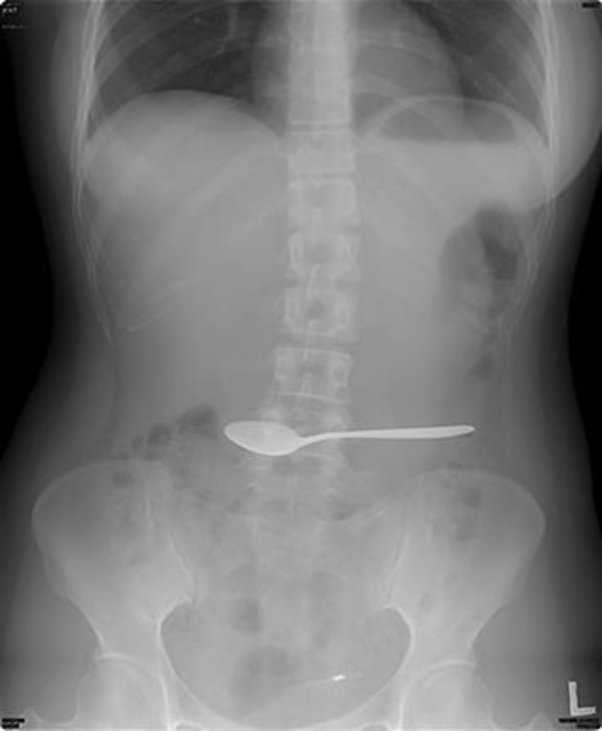
Plastic pollution has become a global environmental crisis. The use of plastic has exponentially increased over the past few decades, resulting in large amounts of plastic waste ending up in our oceans, rivers, and landfills. While the visible impact of plastic pollution is evident in the form of littered shores and entangled wildlife, there is a growing concern about the potential health risks associated with consuming microplastics.
Microplastics are tiny particles of plastic, less than 5 millimeters in size, that come from a variety of sources such as the fragmentation of larger plastic items, microbeads used in personal care products, and synthetic fibers released during washing of synthetic clothing. These microplastics are now found in abundance in our oceans, freshwater bodies, and even in the air we breathe.
Studies have shown that microplastics can be ingested by a wide range of marine species, entering the food chain and ultimately reaching our plates. It is estimated that humans ingest an average of 50,000 to 70,000 microplastic particles per year through food and drink. This raises concerns about the potential health effects of consuming plastic, as these particles can release toxic chemicals and act as carriers for other pollutants.
- The Concern of Plastic Consumption
- Plastic in Our Food and Water
- Impact on Human Health
- Prevention and Solutions
- Impact on Our Health
- Environmental Consequences
- Terrestrial Impact
- Marine Impact
- Microplastics and Marine Life
- Steps to Reduce Plastic Consumption
- 1. Bring Your Own Reusable Bags
- 2. Say “No” to Single-Use Plastics
- 3. Choose Tap Water Over Bottled Water
- 4. Use Reusable Containers for Food and Drinks
- 5. Opt for Fresh Produce and Local Markets
- 6. Recycle Properly
- The Importance of Being Informed
- Health Implications
- Environmental Impact
- FAQ:
- What is the article “Are We Unknowingly Consuming Plastic?” about?
- How does plastic end up in our food?
- What are the potential health risks of consuming plastic?
- How can we reduce our plastic consumption?
The Concern of Plastic Consumption
Plastic consumption has become a major concern in today’s society. With the rise in production and use of single-use plastics, there has been a corresponding increase in the amount of plastic waste being generated. This waste not only has negative implications for the environment but also presents potential health risks for humans.
Plastic pollution has become a significant threat to our oceans and marine life. Plastics, particularly microplastics, are finding their way into the waterways and eventually into the ocean. Marine animals are ingesting these plastics, mistaking them for food, which can lead to suffocation, internal injuries, and even death. The accumulation of plastics in the ocean also poses a threat to the entire marine ecosystem, as it disrupts the food chain and can lead to the extinction of certain species.
In addition to its impact on marine life, plastic consumption also poses health risks to humans. Microplastics have been found in various food products, such as seafood, salt, and even drinking water. These microplastics can enter our bodies through ingestion and inhalation, potentially causing harm to our internal organs and immune system. Studies have linked the consumption of microplastics to various health issues, including hormonal disruptions, reproductive problems, and even an increased risk of certain types of cancer.
Efforts are being made to address the concern of plastic consumption. Many countries and organizations are implementing regulations and initiatives to reduce the production and use of single-use plastics. Recycling programs and campaigns promoting the use of reusable alternatives are also being promoted to minimize plastic waste. However, individual actions are equally important in combatting plastic consumption. By making conscious choices to reduce plastic use, such as using reusable bags and water bottles, we can all contribute to creating a less plastic-dependent society.
Ultimately, the concern of plastic consumption requires collective action and awareness. It is crucial for individuals, governments, and industries to work together to find sustainable solutions and reduce the impact of plastic on our environment and health. By addressing this global issue, we can strive towards a future with less plastic pollution and a healthier planet for future generations.
Plastic in Our Food and Water
Plastic pollution has become a global environmental issue, affecting not only our oceans and rivers, but also our food and water.
Microplastics, tiny pieces of plastic less than 5 millimeters in size, have been found in various food and beverage products. These microplastics can come from a variety of sources, such as packaging materials, equipment used in processing and manufacturing, and even the environment itself. When we consume these products, we are unknowingly ingesting small amounts of plastic.
Impact on Human Health
Studies have shown that microplastics can have negative effects on human health. The particles can potentially release harmful chemicals, such as additives used in the production of plastic, and can also accumulate toxic substances from the environment. These chemicals can then enter our bodies and have the potential to cause various health problems.
The exact consequences of ingesting microplastics are still not fully understood, but research suggests that they may affect our immune system, disrupt hormonal balance, and even contribute to the development of certain diseases.
Prevention and Solutions
Reducing our consumption of single-use plastics and adopting more sustainable packaging options is crucial in tackling plastic pollution. Additionally, improving waste management systems and increasing recycling efforts can help prevent plastic from entering our food and water sources.
Consumers can also play a role by making informed choices. Choosing products with minimal or no plastic packaging, using reusable containers and bags, and supporting businesses that prioritize sustainable practices can all contribute to reducing plastic pollution.
Efforts are also underway to develop new technologies and materials that are less harmful to the environment. This includes innovations in biodegradable and compostable plastics, as well as alternative packaging solutions made from renewable resources.
Ultimately, addressing the issue of plastic in our food and water requires a collective effort from individuals, businesses, and governments. By working together, we can minimize plastic pollution and protect our health and the environment.
Impact on Our Health

Plastic pollution poses a significant threat to our health. The consumption of microplastics, which are tiny particles of plastic less than 5 millimeters in size, has been linked to various health issues. These microplastics can be found in the air we breathe, the water we drink, and the food we eat.
Studies have shown that microplastics can accumulate in our organs and tissues, leading to inflammation and oxidative stress. This can potentially increase the risk of chronic diseases such as cardiovascular disease, diabetes, and certain types of cancer.
Furthermore, microplastics may also disrupt our endocrine system, which is responsible for regulating hormones in our bodies. This disruption can lead to hormonal imbalances and reproductive issues.
In addition to microplastics, the chemicals used in the production of plastic, such as phthalates and bisphenol A (BPA), can also have detrimental effects on our health. These chemicals are known to be endocrine disruptors and have been linked to developmental disorders, reproductive problems, and even an increased risk of certain cancers.
It is essential to minimize our exposure to plastic and make sustainable choices to protect our health. This includes reducing our use of single-use plastic items, such as plastic bags and bottles, and opting for reusable alternatives. Additionally, supporting policies and initiatives that aim to reduce plastic pollution can help safeguard our health and the environment in the long run.
Environmental Consequences
The consequences of unknowingly consuming plastic have wide-ranging impacts on the environment. Plastic pollution has become a significant and growing global concern, affecting both terrestrial and marine ecosystems.
Terrestrial Impact
Plastic particles, known as microplastics, can enter the soil through various sources, such as the use of plastic mulch in agriculture or the decomposition of plastic waste. These microplastics can contaminate the soil, affecting its fertility and disrupting the natural ecosystem that supports plant and animal life. Additionally, microplastics in soil can be ingested by small organisms, which can then be consumed by larger animals, leading to bioaccumulation and potential toxicity effects.
The presence of plastic in terrestrial environments also affects water sources. Rainwater runoff can carry microplastics from landfills and other polluted areas into rivers and lakes, leading to water contamination. This not only affects aquatic life but also poses a threat to human health, as microplastics can enter the food chain through the consumption of contaminated water and aquatic organisms.
Marine Impact

The impact of plastic consumption is even more pronounced in marine ecosystems. Plastic waste that ends up in the oceans poses a serious threat to marine life. Marine animals, including fish, turtles, seabirds, and marine mammals, can mistake plastic debris for food and ingest it. This can lead to internal injuries, digestive blockages, and even death. In addition, the presence of plastic in marine ecosystems can alter habitat structure, affect reproductive success, and disrupt natural behaviors.
The accumulation of plastic debris in the oceans also contributes to the formation of giant garbage patches, such as the Great Pacific Garbage Patch. These patches not only impact marine life but also release harmful chemicals into the water, further degrading the marine environment.
In conclusion, the environmental consequences of unknowingly consuming plastic are severe and widespread. It is crucial to raise awareness about plastic pollution, reduce plastic consumption, and implement effective waste management strategies to mitigate its impact on the environment.
Microplastics and Marine Life
Microplastics, tiny particles of plastic less than 5 millimeters in size, are having a devastating impact on marine life. These particles come from a variety of sources, including plastic bags, bottles, and other single-use plastics that end up in our oceans. As these plastics degrade, they break down into smaller and smaller pieces, eventually becoming microplastics.
Marine animals, such as fish, turtles, and whales, are often unable to distinguish microplastics from their natural food sources, such as plankton and small fish. As a result, they inadvertently consume these tiny plastic particles, which can have serious consequences for their health.
When marine animals consume microplastics, the particles can accumulate in their digestive systems, causing blockages and preventing them from getting the proper nutrients they need to survive. This can lead to malnutrition, weakened immune systems, and even death.
In addition to the physical harm caused by microplastics, these particles can also contain toxic chemicals that can be harmful to marine life. These chemicals can leach into the animals’ tissues and can disrupt their hormones, reproductive systems, and overall health.
The impact of microplastics on marine life is not only limited to larger animals. Smaller organisms, such as zooplankton, which form the base of the marine food chain, are also affected. The ingestion of microplastics by zooplankton can disrupt their feeding and reproductive processes, ultimately impacting the entire ecosystem.
Overall, the presence of microplastics in our oceans poses a grave threat to marine life. Urgent action is needed to reduce the amount of plastic waste entering our waters and to properly manage and dispose of existing plastic waste to protect the delicate balance of marine ecosystems.
Steps to Reduce Plastic Consumption
Plastic consumption has become a major global concern, but there are steps that individuals can take to reduce their impact on the environment. Here are some actions you can consider:
1. Bring Your Own Reusable Bags
One simple way to reduce plastic consumption is by bringing your own reusable bags when you go shopping. Many stores now offer reusable bags for sale or even provide them for free, so there’s no excuse not to make this small change.
2. Say “No” to Single-Use Plastics
Avoiding single-use plastics, such as straws, disposable cutlery, and plastic cups, can have a big impact on reducing plastic waste. Instead, carry your own reusable alternatives, such as stainless steel straws and a travel cutlery set.
3. Choose Tap Water Over Bottled Water
Plastic water bottles are a significant source of plastic waste and pollution. By choosing tap water and using a reusable water bottle, you can help reduce the demand for bottled water and minimize your plastic consumption.
4. Use Reusable Containers for Food and Drinks
Invest in reusable containers for storing food and beverages. Instead of relying on single-use plastic bags or containers, use glass or stainless steel containers that can be reused multiple times.
5. Opt for Fresh Produce and Local Markets
When grocery shopping, choose fresh produce that doesn’t come wrapped in plastic packaging. Additionally, consider supporting local farmers’ markets or bulk stores that allow you to bring your own containers.
6. Recycle Properly
Ensure that you are disposing of your plastic waste correctly by recycling it. Check your local recycling guidelines to understand what types of plastics are accepted and how they should be prepared for recycling.
By following these steps and making small changes to your daily habits, you can contribute to reducing plastic consumption and help protect our environment for future generations.
The Importance of Being Informed
Being informed about the potential risks and dangers of consuming plastic is crucial for our health and the well-being of our planet. In today’s world, where plastic is found in almost every aspect of our lives, it is alarming to realize that we might be unknowingly consuming it.
Health Implications
Plastic consumption has been linked to a wide range of health issues, including hormonal disruptions, reproductive problems, and an increased risk of cancer. Microplastics, tiny particles of plastic less than 5mm in size, have been found in various food and drink sources, such as seafood, tap water, and even table salt. These microplastics can enter our bodies and accumulate over time, potentially causing long-term health problems.
Environmental Impact
Consuming plastic not only poses risks to our health but also has a severe impact on the environment. Plastic waste pollutes our oceans, harms marine life, and contributes to the global plastic problem. By being informed about the extent of plastic consumption and its environmental consequences, we can make informed choices to reduce our plastic consumption and advocate for sustainable alternatives.
| Benefits of being informed: | Importance |
|---|---|
| 1. Protecting our health | Being aware of the potential risks allows us to take necessary precautions and make informed decisions about our diet and lifestyle. |
| 2. Promoting sustainable practices | By understanding the environmental impact, we can actively support initiatives and policies that aim to reduce plastic consumption and promote sustainable alternatives. |
| 3. Spreading awareness | Being informed enables us to educate others about the issue, raising awareness and encouraging collective action to address the problem. |
In conclusion, being informed about the potential risks and consequences of consuming plastic is essential for our health and the environment. By educating ourselves and others, we can work towards reducing plastic consumption, protecting our well-being, and preserving the planet for future generations.
FAQ:
What is the article “Are We Unknowingly Consuming Plastic?” about?
The article “Are We Unknowingly Consuming Plastic?” discusses the presence of plastic in our daily lives and its potential effects on our health. It explores various ways in which we unknowingly consume plastic, such as through food packaging, water bottles, and microplastics.
How does plastic end up in our food?
Plastic can end up in our food through various ways. For example, when plastic packaging comes into contact with food, harmful chemicals can leach into the food. Additionally, microplastics, which are tiny particles of plastic, can be present in the air, water, and soil, and can contaminate the food we eat.
What are the potential health risks of consuming plastic?
Consuming plastic can pose several health risks. Chemicals in plastic, such as BPA and phthalates, have been linked to hormonal disruptions, reproductive disorders, and increased risk of certain cancers. Microplastics, when ingested, can accumulate in our bodies and potentially cause inflammation, oxidative stress, and other adverse effects.
How can we reduce our plastic consumption?
There are several ways to reduce our plastic consumption. We can start by using reusable bags, water bottles, and food containers instead of single-use plastic. It’s also important to choose products with minimal plastic packaging and to recycle properly. Additionally, supporting initiatives that promote the use of sustainable materials and advocating for stricter regulations on plastic usage can contribute to reducing plastic consumption.